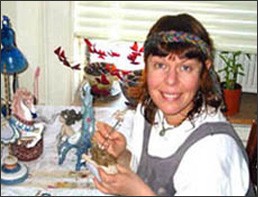China Restorationin History
The art and craft of Chinese porcelain has played a crucial role in bringing the artistry of porcelain to different parts of the world, as well as to different and often seemingly unrelated disciplines (architecture, sculpture, silverwork, etc.) It set forth a novel and creative multi-cultural synthesis that has helped the way the world looks at a work of art.
According to Luba Sokolina, a porcelain repair expert at Luel Restoration Studio and a student of Asian culture and art, “Around the same time Europe was going through a “porcelain craze”, Islamic cultures of Egypt and Turkey were too greatly influenced by the art of Chinese porcelain makers. “ Doing research on the impact of Chinese porcelain on Islamic art and craft, Luba noticed that It is precisely in the treatment of surface that China exerted her most powerful impact on Islamic concepts of ceramic decoration. Prior to the fifteenth century, the Chinese working in blue and white had been content to accept the two dimensionality of Islamic design, with its decorations capable of infinite extension into space and so filling it.
But once the mathematical division of space which was a concommitant of this approach had been mastered, the Chinese adapted the fundamental need for division of surface to their own ends, and reverted to their own deeply-ingrained habit of using space in such a manner as to imply a third dimension. They achieved this by using decorative elements which could stand independently of each other and yet were spatially related on the surface. The impact was not confined to Iran, but is seen in Egypt, in the work of Gaibi and his contemporaries, in Syria, and in the Iznik wares of Turkey. Ultimately the same impact, in a slightly different context was made on Europe.
The actual elements constituting the Chinese porcelain stylehave now become so deeply imbedded in the traditions of both the Near East and Europe that it is not easy to recognize them, but once seen and their origins understood, they become as obvious as those of the Near East in Chinese traditions.
Luba Sokolina is the head restorer of Luel Restoration Studio, specializing in ceramic and porcelain repair. Visit Luel Restoration Studio at https://www.luelstudio.com


Speak Your Mind